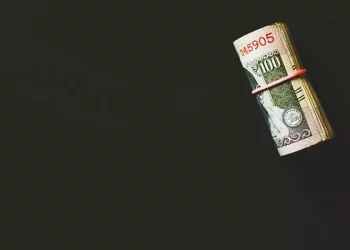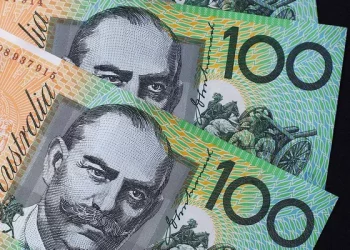Thailand’s currency, the baht, is issued in various denominations, both in banknotes and coins. Among these, the 5 baht coin stands out due to its frequent use in daily transactions. While it’s a common sight in the hands of locals and tourists alike, some versions of the 5 baht coin have sparked curiosity among collectors and casual observers. This guide provides a comprehensive overview of whether a 5 baht coin is rare and what factors influence its rarity.
1. Basic Features of the 5 Baht Coin
The standard 5 baht coin has undergone several changes in design, composition, and size since it was first introduced. Most 5 baht coins are made from a cupronickel alloy, giving them a silvery appearance. Typically, the obverse side features the portrait of the reigning monarch, while the reverse showcases various national symbols, temples, or royal emblems.
Key characteristics of the 5 baht coin include:
- Diameter: Approximately 24 mm
- Weight: Around 7.5 grams
- Edge: Alternating plain and reeded segments
- Material: Cupronickel (in most years)
Understanding these basic features can help in identifying genuine coins and distinguishing rare variants from common ones.
2. Circulation and Production Volume
The rarity of a coin is often determined by how many were minted and put into circulation. For the 5 baht coin, most years have high mintage volumes, meaning millions of coins were produced for daily use. However, certain years had significantly lower production, either due to economic conditions or changes in minting priorities.
Years with limited circulation tend to yield coins that are more valuable to collectors. For instance, if the Royal Thai Mint produced fewer coins in a particular year, those coins may now be considered scarce. Moreover, any coin withdrawn early from circulation can increase in rarity, especially if the surviving pieces are in good condition.
3. Commemorative Editions
Thailand frequently issues commemorative coins to mark important national events, anniversaries, or royal ceremonies. These special editions are often produced in smaller quantities compared to standard circulation coins. Many 5 baht coins fall into this commemorative category and are prized for their aesthetic appeal and historical significance.
Examples of commemorative 5 baht coins include:
- King Bhumibol Adulyadej’s 50th Coronation Anniversary
- Centenary of Thai Railways
- Bangkok Bicentennial Celebrations
These coins often feature unique designs, different metals, and distinct mint marks. Their limited release adds to their appeal among numismatists.
4. Error Coins and Misprints
Error coins are another category that may enhance the rarity of a 5 baht coin. These occur due to mistakes during the minting process, such as misalignment, double striking, or off-center prints. While rare, such error coins occasionally escape quality control and enter circulation.
Collectors are particularly interested in these flawed specimens, especially when the error is clear and the coin remains in relatively good condition. The value of an error coin can significantly exceed that of a standard version, depending on the type and visibility of the error.
Types of errors include:
- Die rotation errors
- Off-center strikes
- Double dies
- Planchet defects
5. Collector Demand and Market Value
The numismatic value of a 5 baht coin is also influenced by collector interest. Even if a coin is rare, its market value depends on how much demand there is for it. Coins that feature significant historical events, unique designs, or royal portraits are generally more sought after.
In Thailand and among international collectors, certain 5 baht coins have achieved high market values due to demand. Coins from limited series, especially in mint condition or with proof-quality strikes, often command premium prices. Auction records and online marketplaces can provide insights into current valuations.
6. Factors That Influence Rarity
Several key factors determine whether a 5 baht coin is rare:
- Mintage numbers – Lower numbers generally mean higher rarity.
- Condition – Coins in excellent or uncirculated condition are more valuable.
- Design variations – Unique design elements can increase appeal.
- Historical relevance – Coins linked to notable events or monarchs often carry more weight.
- Errors or anomalies – As mentioned, minting mistakes can add value.
Understanding these aspects is essential for evaluating a coin’s rarity and potential market worth.
7. Identifying Rare 5 Baht Coins
To identify whether your 5 baht coin is rare, follow these steps:
- Check the year of minting. Look for years known to have low mintage.
- Examine the design. Compare it to standard issues to detect variations.
- Inspect for errors. Use a magnifying glass to spot abnormalities.
- Assess the condition. Coins without scratches or wear are generally more valuable.
- Refer to catalogs. Use numismatic guides or online databases for comparison.
Combining these methods will give you a better sense of whether your coin has collectible value.
8. Caring for and Storing Your Coins
Proper storage is crucial for preserving the value of rare coins. Exposure to moisture, air, and human handling can deteriorate the coin’s surface, impacting its condition and marketability. Consider the following tips:
- Use acid-free coin holders or capsules
- Store in a cool, dry place
- Avoid cleaning with abrasives or chemicals
- Handle with gloves to prevent oil transfer
Maintaining your coins in top condition ensures that they retain or even increase their value over time.
9. Selling or Trading 5 Baht Coins
If you believe you own a rare 5 baht coin, you might consider selling or trading it. Popular platforms for such transactions include coin shows, auctions, and online marketplaces like eBay or local numismatic forums. Before selling, get an appraisal from a trusted coin dealer or grading service to understand its value.
Always keep documentation, especially for commemorative or graded coins, as this adds credibility and can justify higher prices. Transparent communication about the coin’s origin, condition, and features is essential for successful transactions.
10. Common Myths and Misconceptions
Many people assume that any old or unusual-looking 5 baht coin must be rare. However, age alone does not equate to rarity. Likewise, discoloration or wear does not increase a coin’s value. It’s important to rely on facts, such as minting data and professional evaluations, rather than hearsay.
Here are a few common myths debunked:
- “If it looks old, it must be valuable.” Not necessarily true.
- “All commemorative coins are rare.” Only those with low mintage or special features are.
- “Damaged coins are worth more.” Usually, damage lowers value unless it’s a mint error.
Conclusion
While most 5 baht coins are common and used regularly in everyday transactions, some versions are indeed rare and valuable. By understanding the key features, production volumes, and factors that influence rarity, you can better evaluate the coins in your possession. Whether you’re a seasoned collector or a curious newcomer, this guide offers a clear and structured overview to help you navigate the world of Thai coin collecting with confidence.
Related Topics:

























